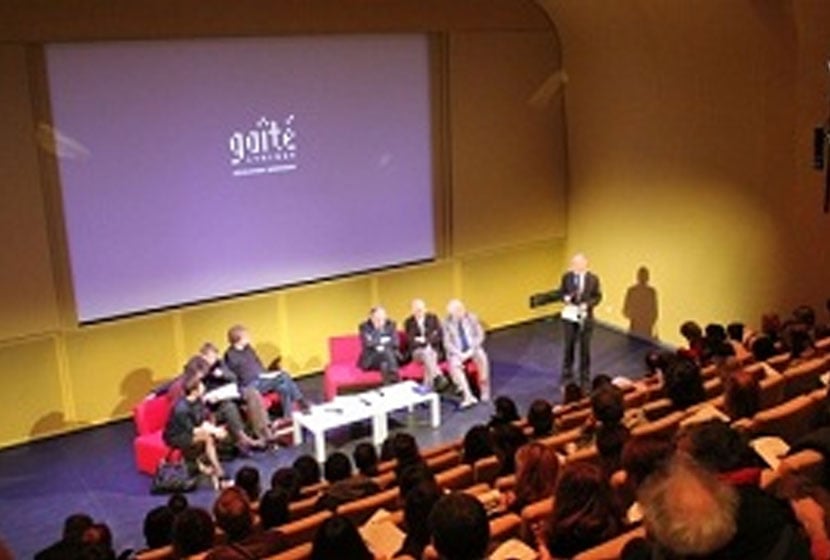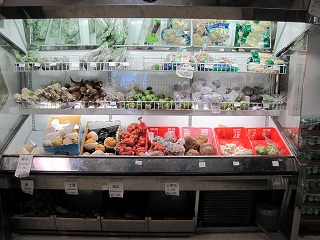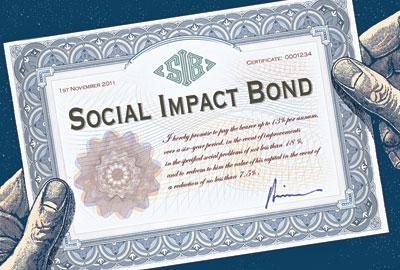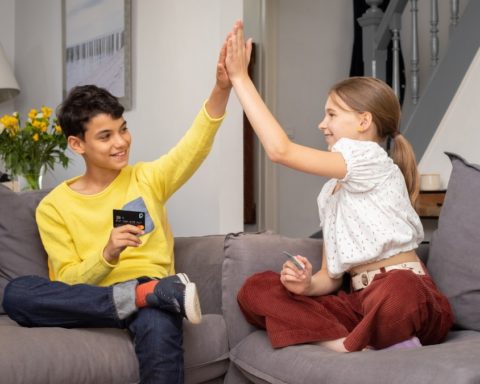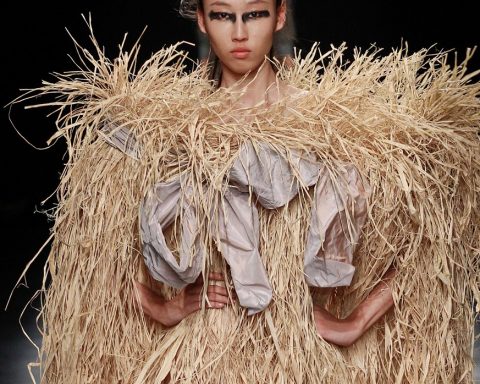The French Workshop continues its monthly cycle of meetings and, for the second time, was held at the Gaîté Lyrique in Paris. Whereas last November it had taken an interest in digital literature, through a conference entitled "Le moment eBook", this time it was digital literature and the new forms of writing it generates that were at the heart of the debates.
The workshop was organized in partnership with Society of People of Letters (SGDL), which is very concerned about digital issues - particularly copyright - and which awards the annual Grand Prix for Multimedia Works. The debate was moderated by Camille Pène. (L'Atelier français) and participants were invited to tweet during the event.
First intervention: Alexandra Saemmer, Lecturer-researcher at Paris 8, specialist in digital writing, and author
 Alexandra Saemmer has drawn up a very clear panorama of digital literature as studied at the University of Paris 8. This literature has existed since the 1950s, but took off in the 1980s and 1990s. Although natively digital, it did not of course emerge in an empty cultural space: it is often part of the traditions of the avant-gardes who have already tried to transgress the fixed frame of the paper page by hypertextual or random devices.
Alexandra Saemmer has drawn up a very clear panorama of digital literature as studied at the University of Paris 8. This literature has existed since the 1950s, but took off in the 1980s and 1990s. Although natively digital, it did not of course emerge in an empty cultural space: it is often part of the traditions of the avant-gardes who have already tried to transgress the fixed frame of the paper page by hypertextual or random devices.
Thus, the authors of the'OuLiPo had, as early as the 1960s, cut poems into strips to demonstrate the importance of chance in the creative process. Perhaps the best known example is "One Hundred Thousand Billion Poems" from Raymond QueneauA work of combinatorial poetry published in 1961. Quite logically, some authors of OuLiPo were among the first to take an interest in computers as automatic generators of poetic texts. No wonder that there is a fairly simple digital version of the "Hundred Thousand Billion Poems", where the slices are no longer to be flipped through but to be chosen directly on the screen; once the reader has made all his choices, he can automatically generate one of the sonnets of the "Hundred Thousand Billion Poems".
On the narrative side, early literary experiences in digital media often drew on the tradition of the New Novel. In the twentieth century, following the spectacular revolutions in mathematics and science, but also following the political and human catastrophes of the two World Wars, reality seems to be gradually escaping the reassuring temporal and causal structures of the traditional novel, and unfolding in a complex web of finalities, a chaos in which authors and readers must now find their own way. Hypertext then appears to some as the dream tool for creating and reading this non-sequential and chaotic fabric.
Thus, the work "Twelve blue" by Michael Joyce (1996): this is a hyperfiction, or hypertextual novel. The author invites the reader through a message that appears on the screen: "Follow me before the choices disappear". By clicking on hypertext links, the reader follows the paths and makes his or her choices.
With this novel, we plunge into the story of a loss of path with, at the side of the road, more and more forks and souls in pain trying to find the past or on the contrary to extricate themselves from their painful memory.
Today, the paradigms of the poetic machine and hypertext-fragmentation still exist in digital literature, but the arrival of multimedia has made it evolve towards new forms that Alexandra Saemmer summarizes in four points illustrated through a subjective selection of works.
Text animation
Letters and words start to move, and this movement enters into a more or less meaningful relationship with the meaning of the text. In some cases, the movement illustrates, imitates or reinforces the meaning of the text.
For example, "The Child" by Alex Gopher (2006): this video tells the story of a birth. A man and a woman have to get out of their building, cross New York in a taxi to get to the hospital. Buildings, cars, streets, passers-by, the taxi, the man and the woman are represented by words that qualify them while drawing their silhouettes. The movement reinforces or imitates the meaning of the words: The anxious face of the husband shakes and the pregnant belly of the wife stirs, while the letters represent the architecture of the Brooklyn Bridge.
In homage to paper calligrams, Alexandra Saemmer uses the term "cinegram" to characterize the imitative relationship between text and movement in this type of creation.
Another even more subtle example, " The Sweet Old Etcetera" by Alison Clifford The author starts from a poem by E.E. Cummings to create an imaginary landscape. Initially, the landscape is deserted, but through a gradual interaction, the poem emerges from the ground and individual letters become the protagonists of each poem story. The landscape and its components appear little by little through interactive typographical games linked to the poem's verses: a tree with moving branches, leaves fluttering delicately, the sky changing colours, a hopping grasshopper...
In other cases, the movement does not imitate - or not only imitates - but opens the meaning of the text to new meanings. These are animated metaphors.
For example, "Softies" by David Jhave Johnston This figure is not fundamentally new and text animation already existed in video art and cinema before finding its expression in digital literature. But for Alexandra Saemmer, novelty alone is not a sufficient criterion to evaluate digital literature today, and animation in digital literature is different in nature because it is programmed.
The program
The program acts on the screen, even if the reader does not directly experience its action. Moreover, the program is not necessarily executed in the same way on every computer, which makes this literature fundamentally fragile. Some animations created in the 1980s, which at the time lasted about twenty minutes, now pass over the screen in a few seconds. They thus become almost unreadable, which is a major issue for preservation but also a challenge for authors who make the ephemeral nature of their works a fundamental aesthetic principle.
Sometimes these works are designed to slowly decompose on the screen, and it is this vulnerability that Alexandra Saemmer herself tries to experiment with in her creations, for example in "Tramway« designed for the Canadian magazine Blue Orange.
I hope that the painful memories that are contained in the animated sentences and words will pass very quickly on the screen in a few years, so quickly that we can talk about an unreadable future," explains the researcher who is becoming an author for the occasion. »
"Tramway" by Alexandra Saemmer:
Other authors inscribe their creations in the ephemeral flow of information on the web. For example, Gregory Chatonsky with Sodome@home: this creation juxtaposes the subtitling of the film by Pasolini, "Salò" or the 120 Days of Sodom, images taken from the Flickr site based on certain keywords. The reader will obviously never be able to discover the same associations when he returns to the work because the Flickr database is constantly updated by Internet users. The combinations are sometimes unusual and raise the reader's questions.
Interactivity
The text becomes manipulable on the screen. You can click on it - an experience commonly shared by everyone on the Internet - but you can also move letters or words, insert contents yourself. Meaningful relationships are then created between the text that can be manipulated, the text generated by the gesture of manipulation and the gesture of manipulation itself.
This is what Alexandra Saemmer and her colleague Serge Boucheron call "figures of manipulation", perfectly visible in "The Manipulation". Underground" by Gregory Chatonsky The interactive map of this creation is a fantasy exploration of the Parisian metro network. When you explore this map and click on one of the boxes, most of the cases fall in a rather expected way on an animation. But, to explain what a manipulative figure is, Alexandra Saemmer shows that when you try to activate the "first memories" box, no matter how many times you click, try to do the usual interactive gestures, nothing happens. At first we can assume, as a reader used to computers, that this is a bug, but on reflection it is likely that not being able to access these original memories is a normal phenomenon to which the author would like to draw our attention.
Another work entirely based on an unconventional manipulative figure, " Déprise" by Serge Bouchardon "Déprise" is a creation on the notions of takeover. When do we feel like we are in a situation of taking or losing control in life? Six scenes, divided into as many chapters, tell the story of a character in the midst of a breakdown. At the same time, this game of taking and losing control allows us to stage the situation of the reader of an interactive work.
In the sixth chapter, it is time for the reader to regain control and he is invited to write his own text in a box: but what appears on the screen does not correspond to what he types on his keyboard, the interface no longer obeys. This is a loss of control, very confusing for the reader.
Digital literature therefore sometimes has an impertinent, resistant character. Far from inviting the reader to play a frivolous game with words or images, the interface refers the reader to his or her reflexes, expectations and the conventions of the digital world and questions them.
Serge Bouchardon's "Déprise": without realizing it immediately, the reader brings up a portrait of a woman by moving the mouse over text.
See also Philippe Bootz's Rabot-poet The Planer-poet: the reader must "plane" the screen with his mouse to access the text.
Multimedia
Much digital literature is based on a fusion of text, sound, still and moving images. This characteristic brings this literature closer to the plastic arts, as in the case of "In the white darkness" by Reiner Strasser:
With great finesse, Reiner Strasser observed Alzheimer's patients in a hospital for several weeks; from his observations, he composed an interactive visual poem that makes the reader-interactor experience the defragmentation of memory, the slowness and despair of decoherence, but also the sweetness of the last memories.
Access to digital literature
These literary productions are very beautiful, often astonishing, but are distributed through confidential channels. To access them, you can consult some anthologies available on the Internet. There are databases of French-language digital literature, such as the one developed by the NT2 research group (Université du Québec à Montréal), which has carried out extensive indexing work on more than 3,500 works in a Répertoire des arts et littératures hypermediatiques.
These databases provide access to a selection of works and are part of a process of canonization of this literature.
There are also two CoRoms produced by the Electronic literature organization which bring together American and European works.
Authors are beginning to unionize and to make themselves known in still limited circles, probably because this is experimental literature, mostly freely available and not part of any viable economic model.
In recent years, initiatives have been launched by authors themselves or by academics to disseminate these productions (symposia, presentations, festivals, repertoires, etc.). Thus the festival ePoetry that took place in Paris.
Social networks also play an important role in promoting digital literature. They have recently given rise to two movements: literatures that integrate geolocation processes, and also literatures that are currently being written on Facebook, Twitter (already referred to as "TweetLiterature") or on blogs. These forms of literature are certainly more popular than the experimental ones studied by Alexandra Saemmer, which did not prevent the researcher from hoping for "a movement towards the popularisation of these works. »
In conclusion, she recalled that France has played an important role in Europe in the development of digital literature, notably thanks to the work carried out at Paris 8, while citing other European centres: Germany; Spain, through the Hermeneia site or thanks to a fertile Catalan digital literature which awards a prize every year; Portugal, where authors have been pioneers in experimentation...
Second intervention : Philippe Boisnard, Multimedia artist and writer
 The intervention of Philippe Boisnard has shed additional light on digital literature. The artist does not come from an academic background and is in the tradition of avant-garde and performance art, which shows how a text also intervenes in relation to the body and how it is put into action.
The intervention of Philippe Boisnard has shed additional light on digital literature. The artist does not come from an academic background and is in the tradition of avant-garde and performance art, which shows how a text also intervenes in relation to the body and how it is put into action.
He first returned to the concept of "action-poetry", which appeared in the early 1960s, including Julien Blaine or Bernard Heidsieck are the great representatives. "They tore the language off the page and got out of the book, not that they refused it - Julien Blaine publishes a lot of works on paper - but there was a need for the language to be written differently. »
Philippe Boisnard insists on the importance of seeing works of digital literature, such as those presented by Alexandra Saemmer, in galleries or museum spaces in order to better appreciate them. But if these works are all of great quality, they do not, according to him, illustrate the practice of living writing. Digital technology raises precisely this question, because it is a technology that allows one to be a producer, a broadcaster in real time and to be received during the act of writing. The advent of Web 2.0, and in particular blogs and Twitter, has contributed to the emergence of this living writing. Writing, reading and reception have become immediate, whereas we know that one life is sometimes insufficient to go through all the stages of traditional publishing, from the time of writing to distribution in bookstores, if one is lucky enough to have access to it, which is far from being the case for all poets...
That's when the question of the body came up again," explains Philippe Boisnard. How can you write digitally with the body? How can new forms of causality be introduced into poetry? »
The artist-performer cites the example of Bernard Heidsieck and his use of RayVox, a voice-activated device that enables him to spatialize his poem. In addition to the two tracks available on his RayVox, one track on the right and one on the left, the artist adds a third, in the middle, with his real voice. "All the poetry is reinvented in this action poetry. »
The numeric allows you to interrogate the writing in a different way. On stage, the artists re-elaborate a whole lexical field and practice "public writing". To illustrate this form of writing, Philippe Boisnard presented a work created with the artist Hortense Gauthier, with whom he performs under the name hp process.
A digital poetry-action performance: Contact
http://databaz.org/hp-process/
Contact is a digital poetry-action performance. It's not multimedia," insists the artist, "here it's really writing that interests us. "A man and a woman stand on stage with their backs to the audience who only see screens similar to computer screens.
The performance unfolds like a cat which, thanks to the potentialities opened by an open source software created by Philippe Boisnard, transcends the possibilities offered by traditional cats to open up an aesthetic, poetic and erotic communicational space between a man and a woman. Both of them will put their words and their bodies into play in an attempt to touch each other, to reach each other and transcend not only the distance linked to technology, but the irremediable gap between two beings by questioning this gap and this impossibility of communication as the very space of desire.
This lively writing experience is built around an improvised exchange between Hortense Gauthier and Philippe Boisnard, as much on the level of writing the text on the screen as on the level of speech and sound. The text is composed, typed, projected, sampled, destructured in real time by the two performers. Little by little, they develop a poetic dialogue in which a disturbance is gradually introduced, linked both to the possibilities of the software and to their movements. The two performers can indeed manipulate the text and the sound thanks to an interaction interface fixed on their hand (for a few months now, they have been using the Kinect, developed by Microsoft). Thus, with their fingertips, they activate and sculpt the words they write, changing font size, colour, positioning and movement. They can write and intervene on their own screen as well as on their partner's screen. They are captured on video and can themselves manipulate their image, accumulating live screen captures, working on the fusion of their image and their writing.
Far from positioning itself only in a critical relationship with the mode of communication that is chat, Contact tries to show how the encounter can go beyond the sole semiotic and technological framework of the screen to also feed off the gestures and bodies brought into play in the performance. The artists question the digital as the very space of the possible and the impossible of an encounter, and it is in this play between distance and proximity that the presence of the other can unfold and the desire to reveal itself. The computer and the network can then appear as a condition of the possibility of desire.
Through this performance, we also wanted to show how our language gives itself to the other, how it is received," explains Philippe Boisnard. »
While there is no doubt that the work belongs to the field of performance, one can wonder about the place of writing in this work. The entire written conversation of Hortense Gauthier and Philippe Boisnard is recorded in real time and is reproduced at the end of the performance in the form of a text file. "Each performance reinterprets both the writing and our encounter. It's not simply a question of rewriting texts that we're going to put on screens - computer, Kindle or iPad - but of inventing new styles of writing that completely go beyond the traditional framework of what we used to call the book".
And Philippe Boisnard to insist on the technological particularity of the book which will never be replaced by digital... " It is very important to realize that it is not a question of excluding or going beyond the book, it is a question of understanding how, at a given moment, there is superimposition, cohabitation and reciprocal questioning of each medium and each investment. »
To elaborate his creations, Philippe Boisnard uses graphic programming languages: Pure Data (a graphic programming software for real-time music and multimedia creation) and Max/MSP (a music software for sound synthesis, analysis, recording and MIDI instrument control).
The artist also presented an experiment he is conducting at the Paris Villette theatre with Lucille Calmel, which will be presented in June 2012 as part of the Open festival. The performer reinterrogates all his sources of writing - thousands of pages over a ten-year period - as a memory. Equipped with a Kinect*, she evolves in a piece that represents her emotional, affective, sound brain, in a way "her writing brain". As she walks around the room, she moves around emotional areas of her own memory relayed by video projectors. For the spectators around her, a whole graphic representation of this memory then appears, through texts that will be reinterviewed on the Internet, in word processing files, in the sound recordings she may have made, in her mailings, her chats, her tracings?
"It's a very interesting device, although very affecting for the artist, because you're really dealing with someone whose emotion you follow in real time. It's a fine example of digital literature which, again, beyond the ephemeral nature of presence, produces a text file at the end of each performance - three times twenty minutes a night. »
- Kinect : launched by Microsoft at the end of 2010, this is a joystickless game system composed of a camera and motion sensors that hackers have been quick to hijack to use it for other purposes.
The last subject of experimentation dear to Philippe Boisnard and the proponents of action poetry: the voice. "To fully understand one of the causalities of digital technology, put yourself in front of a wall and try to make it tremble with your voice: at the end of your life, the most you'll have is an erosion of the wall due to the acidity of your saliva. On the other hand, you can imagine introducing some interactors into the body and, from what is recorded there, produce writing. "Thanks to these devices, the voice can make a wall move, letters appear, activate lights which themselves create forms of writing. This type of literature, which is performed on a stage, is a living form of writing that questions our entire body and our ability to produce writing.
To illustrate this reflection, Philippe Boisnard cited the project he created with Hortense Gautier, who is also his girlfriend and the mother of their daughter. While their baby was still in her mother's womb, a doppler was used to capture the sounds she made. These sounds then interacted with the words of a poem by Julien Blaine entitled "Conception", bringing all the protagonists together on stage for a performance.
Is this more literature?
All these examples explode the frame of the book, the page and even the screen. Can we then still talk about literature? And is Philippe Boisnard's work similar to that of a writer?
"For me, it's writing in the sense that all our performances have poetry as their starting point. "The artist insists on the fact that these new forms of literature and writing are exported very well all over the world. However, he deplores the fact that in recent times the medium has tended to relegate the practice to the background... " I maintain that currently the question of literature is irrigating art; many students in the Fine Arts schools where I work start from the written word, and a fortiori from poetry, to create their plastic works. However, we're focusing on the wrong subject: technology watch is overflowing and causing confusion: we want to make digital literature and now we're producing PDFs! The PDF is a sham emanating from an economic logic that tries to create a high-performance circuit: it doesn't change anything to the problem of writing, whereas the examples we've presented tonight change everything! concluded the artist with passion. »
Third intervention: Kenza Boda, author of the digital novel "Diary of a whim".
 Young author, Kenza Boda presented "Diary of a whim« She defines it as a "fusion novel" for the way in which the different media meet: text, image, animation, video, drawing, music.
Young author, Kenza Boda presented "Diary of a whim« She defines it as a "fusion novel" for the way in which the different media meet: text, image, animation, video, drawing, music.
The young woman explains that she is part of a novel started 3 years ago, which took the form of a love diary telling the story of fantasy in conflict with the experience of reality, questioning the beauty and dangers of this paradox.
The identity of the fusion novel
Kenza Boda has chosen the iPad as the medium for Caprice, as the object seems ideal for an intimate reading experience, as well as for an optimum rendering of the moving image - animations still being coded, which does not yet give an exact idea of their content.
She insists on the notion of team, which proved to be decisive in the making of this novel. In addition to Kenza Boda herself, author of the text, model, images, video, drawings and animations, the "fusion novel" also includes a director's assistant for the filming, Noam Assayag, two musicians, Alexandre Michaan and Ben Beaudequinas well as a sound developer and creator, Philippe Esling.
The author also emphasizes the importance of fluidity to bring together all the media used and define an aesthetic. The screen page is a sensory space, but also temporal, a place of transformation where elements can be replaced, evolve, mutate. For example, some pages are simply composed of typography, while others promise an intimacy described as "devastating", or still others present still or moving images. The idea is to show the organic evolution of writing and images, and to propose animations that create the sensation that the text reacts or breathes, without preventing reading.
Each 'generation' of media was created and added to Caprice in layers. The text was reworked for three years; the image came at the end of the first year and was transformed over time; the video from the third year onwards as well as the sound and animation. "This ensemble met, did not overlap, each of the elements contributing to reinforce the aesthetics of this novel-fusion, a word I chose and which I hope to speak. »
The realisation of such a project is reminiscent of a film. It is both a personal and solitary work, but also an interaction between several professionals. Yet Kenza Boda still speaks of "novel" to describe her Diary as a whim, referring to the etymology of the word, which leads her to the generic idea of literary composition (from the Latin litteratura, which means "writing"). Here, the different forms of writing are intermingled and federated in the aesthetics of Caprice: visual writing, image writing, musical writing, code writing?
Her budding collaboration with a developer - she thinks she's been searching for the right one for a long time - is an invaluable exchange for her. "He who codes has a unique vision of digital space-time, which we, as non-initiates, don't have access to. By explaining the architecture of the code, the developer makes us think about the creation of the digital work in a different way. We cannot create a digital book without sharing this approach or coming to this intuition of what code is. »
A dedicated support
Kenza Boda chose the iPad for the immediacy it provides because, according to her, that's what you're looking for when apprehending a work of art. Not only in the creation, but also in the transmission and distribution of the work," she explains. With an iPad you can be in bed and buy a book, there's nothing more intimate than that, you don't have to go to the bookstore...". She prefers to speak of "visitor" rather than "reader".
Journal d'un caprice will be completed during May 2011 and available in late spring 2011 on the AppStore, provided that the self-publishing steps are successfully completed. The young author assumes the share of chance in the creation, but also the calculation of chance in the reception. The video game and the principle of multiple choice will be integrated into the conception of the novel, notably in the 'updated' versions of Caprice, which are already being developed.
A novel of the particular
The interaction, which involves the intervention of an author and the response of the "visitor", results in a form of personalized creation. A reader will be able to have on his tablet a version of the Journal d'un Caprice application that is not the same as the one of his neighbor. The latter will have interacted in a different way, unlocking an action that will have allowed him to download his own images or his own experience in a cloud created around the work.
Kenza Boda emphasizes the democratic aspect of this personalization: each reader can take possession of the work that is not given in an imposed form. Paradoxically, she also sees it as a luxury, in the sense that her project is based on the idea of exclusivity and possession of an object that corresponds to the user's personal expectations. The fact that the book can also be connected to the Internet multiplies the possibilities of a private market that breaks with the logic of mass distribution.
Kenza Boda doesn't really consider herself a writer, even though she basically says that it is writing that has given her the most pleasure and satisfaction. "The text is a real text, it's not a pretext to make a digital novel. "She sees herself more as an artistic director who stimulates aesthetic choices and guides a team. A role that, according to her, replaces that of the publisher, which she considers "cumbersome". For the young author, choosing her professional environment and knowing how to listen to her opinion is enough to orchestrate a project like hers. "By soliciting my creative partner Noam Assayag, who has proved to be a keen critic, but also musicians and sampled readers at different stages of the creation of Caprice, over the past three years, I have developed this desire to seek resonance. A publisher could have decided what was good or bad in this work. Why? It wouldn't make sense, because we are the creators! »
The audience obviously reacted strongly to these remarks... They nevertheless reflect one of the possible evolutions of digital literature towards a dissociation of roles and skills: one author takes care of the text, another creates the drawings or the music, a developer takes care of the technical dimension of the project... This phenomenon contrasts with the approaches of the pioneers of digital literature who were precisely concerned with programming their works, because this programming process was part of the creative act.
In the particular case of the "Journal d'un Caprice", a sum of multiple media was produced by a person wearing several caps, who then herself invited three other artists to meet her creation, to enrich it, within the framework of an aesthetic orchestration.
Code is poetry
This touches on one of the essential questions of digital literature, which brings two visions of the conception of a work into parallel: on the one hand, the direct confrontation of the author with the materiality of digital in its purest essence, which is the code, and on the other, the delegation of programming to a third party.
For Philippe Boisnard, who programs his creations himself (for Contact, he created an open source software on Pure Data: ODC/open data chat), the code as he uses it is not a mathematical code, but a cerebral transformation of the way of articulating our language, of seeing a word, a metaphor, a colour...". The code influences: it's incorporation, not adaptation. When a dancer writes a poem, his body influences the way he articulates the words, the way he sees the poetics of the page. Just as a philosopher - I'm thinking of Derrida - won't write poetry like a painter would".
A position that Nicolas Francannet (digital publisher) qualifies by specifying that "programming is not within everyone's reach" and that the publisher is there to support authors who wish to move towards innovative forms of creation but do not have the technical competence to do so. »
Fourth intervention: Nicolas Francannet, Co-founder of the digital publishing company StoryLab
 With the intervention of Nicolas FrancannetIn the wake of Kenza Boda's remarks, the question arises as to whether digital technology can emancipate authors from publishers. Indeed, StoryLab proposes to accompany authors in their digital creation process.
With the intervention of Nicolas FrancannetIn the wake of Kenza Boda's remarks, the question arises as to whether digital technology can emancipate authors from publishers. Indeed, StoryLab proposes to accompany authors in their digital creation process.
The publishing house has three core businesses: digital publishing; consulting with traditional publishers to help them take the digital step and adapt their content to new uses and new media; and a laboratory for experimenting with new narrative modes.
Uses
Nicolas Francannet First of all, he recalled that in the field of digital literature, it is essential to consider the uses made by readers and, above all, the creative constraints that these uses induce. He listed these constraints in three categories
- constraints related to the support: is it connected or not? If yes, parasites can disturb the reading: receiving an sms or an email while reading... Is the screen backlit or does it work with digital ink? These material data have an influence on reading comfort, as does the size of the screen to which you will have to adapt on supports as diverse as mobile, tablet, computer or reading machine...
- Context-related constraints: when we talk about digital literature, we immediately think of mobile reading. This reading induces contexts of displacement, noisy contexts in which one will not necessarily be able to read but where one will be able to listen to a story (and it is then still literature, in oral form); or possibly sedentary contexts with much longer available time.
- behavioural constraints: today, for an ever-increasing mass of information, the response time is getting shorter and shorter on new media services, which reduces availability and attention: this is called web-zapping. This increasingly short time, and therefore increasingly precious, means offering content that attracts attention, without doing so at the expense of editorial quality.
Reduced reading times
Once we have defined the audience we want to reach, its uses, its behaviours, the creation can begin. Nicolas Francannet assumes this somewhat restrictive framework and affirms that it is under constraint that one is most creative. The proof of this is the 19th century soap opera artists who created a literary genre under the constraint of frequency. Today these literary works are part of our heritage.
StoryLab wished to publish works written especially for digital. Our job as a publisher," explains Nicolas Francannet, "is to make the author aware of all these constraints so that he can integrate them into his writing. We expect him to write digital literary serials whose mode of writing, inspired by the script, will be chiselled and very rhythmic, including twists and turns to keep the reader on the edge of his seat and take into account this attention span which is increasingly difficult to capture. »
When reading these literary soap operas, the reader is offered benchmarks (average reading time of the soap opera and average reading time per episode) that allow him/her to know, depending on the context in which he/she is evolving, whether he/she will be able to read one, two or three episodes.
Short forms
StoryLab also publishes collections of short stories, mini-novels, novellas, anthologies of literary reviews such as the literary review Décapage. These formats, quite noble on the other side of the Atlantic, are strangely shunned in France by traditional publishers and booksellers. They are formats adapted to digital technology that open up opportunities for authors who write quality texts, but in a short form that cannot be published in the traditional circuit.
The digital publishing house is also developing applications in which the entire story can be found in its written form, combined with an audiobook. It's not revolutionary - 20 years ago there were already boxes with a paperback book and two cassettes -," says Nicolas Francannet, "but today it's all packaged in an application. "The reader who started reading in the metro, on the screen of his smartphone or tablet, can switch to an audio listening mode to hear the end of his story while walking to his desk.
Pickpocket, a collaborative project
StoryLab converges modes of expression (text, sound, video, still image...) and favors collaborative creation modes. The Pickpocket project, presented as part of the Paris en toutes lettres festival from 5 to 8 May 2011, is an example of this.
Pickpocket mixes photo and text. Professional photographers and amateur photographers have been challenged to tell a story through images, through a series of photos taken with an iPhone and retouched, if they wanted, with the applications available on the AppStore. With the Swiss photographer Peter Knapp, StoryLab has selected about twenty series proposed to as many authors who have imagined a micro-fiction. The result is a kind of exquisite digital corpse between authors and photographers, with a pictorial and a written story.
Within the framework of the festival, the chosen device is that of a photo exhibition which presents all the works with, under each photo, a flashcode. This allows the visitor, with the help of his smartphone, to download the micro-fiction corresponding to the photo series and quietly continue the text/photos experience at home.
Nicolas Francannet presented another example of a challenging project developed with the photographer and writer Alain Fleischer, and a musician from Ircam, Sébastien Gaxie. The two artists are going to work in the studio to write a story: that of a musician who forgets his score in a taxi and goes looking for it. Research in the literal and figurative sense," explains Nicolas Francannet. He has lost the masterpiece of his life which he will try to reconstruct. »
In this collaborative work, the music interprets the musician's feelings, but it also makes it possible to see, as the plot develops, how the musician recomposes his work. The idea is that music and text complement each other, sometimes taking over, but really forming a whole. "It's not an enrichment, it's not a soundtrack to a text that has been written beforehand, it's actually written in studio mode like you can do in a film. The music is really part of the narrative and the story.
Is there an economic model for digital literature?
StoryLab is composed of a team with complementary skills: Nicolas Francannet comes from telecoms and mobile content, there is also an editor and an engineer. This mix has shaped the strategy of the publisher who produces books enriched with a business model that seems viable and manages to remunerate the authors. "We manage to pay the authors because we have multiplied the distribution networks and we don't just do PDFs and ePub. We also create applications, not only for iPhone and iPad but also for Android. »
Storylab has also diversified its distribution networks: its content is available on the Android Market and AppStore, but also on mobile operators' platforms. This multiplicity of distributors gives visibility to its content and allows to generate download volume. "Of course, we're still a long way from what we can find in traditional publishing, but these are all leads that lead us to believe that in the long term this economy can be profitable and constitute an interesting alternative for authors. »
As for the experimental part of StoryLab's activities, it does not generate any profit but allows the young company to propose innovations. The challenge is obviously to find a balance between projects for the general public and more specialized works. Nicolas Francannet insists on the need to develop a popular digital literature that can help develop usage, awaken curiosity and lead readers towards more experimental creations.
Philippe Boisnard is, of course, much more reserved about this model for the general public, which, according to him, requires "reducing the complexity and experimentation of a project. "A literary prize such as the one awarded by the SGDL for a multimedia work brings out singularities that are not then found in the distribution channels. The artist deplores a lack of creativity in digital projects, which, for example, struggle to work on ambitious narrative modes (similar to what has developed qualitatively in television series in recent years). "You have to find a conjunction between what is popular - the stories - and writings such as Fleischer's. Perhaps a model will emerge when we are trusted to consider that investing at a loss on projects like ours can be a lever for the rest. »
Conclusions
The workshop concluded with a series of questions from the floor. Serge Bouchardon, one of whose creations was presented by Alexandra Saemmer, wished to collectively question the participants on what comes first in the conception of a digital literary creation: words, relationship to language, history, multimedia experience or interactive experience?
For Kenza Boda, the text and music were the basis for the creation of Diary of a Whim. The music," she explains, "gives a kind of freedom, which can be repeated or even replace a piece of text. "As for Nicolas Francannet, he puts history first because StoryLab "is not in the search for style at all costs. "For him, the author is first of all a storyteller who tells stories, the discussion on form comes next.
Alexandra Saemmer would like to move away from writing texts on paper (or digital media) in the first place. Her deepest desire, which seems to be disturbing her, would be to write directly from hypertext into action. This is undoubtedly the simplest digital experience technically - a Word document is all that is needed - but the most difficult to achieve in practice. "It is almost impossible to write and experiment with all the possibilities of the digital device at the same time...". (Source: l'Atelier français)

